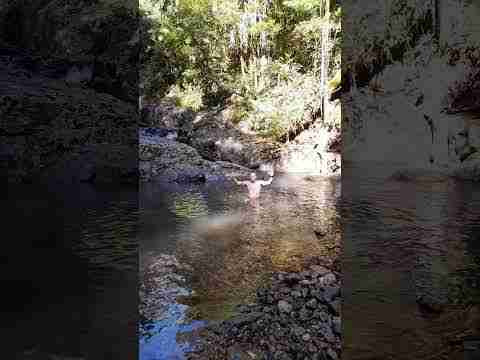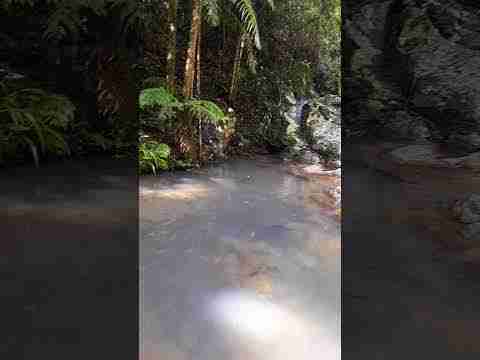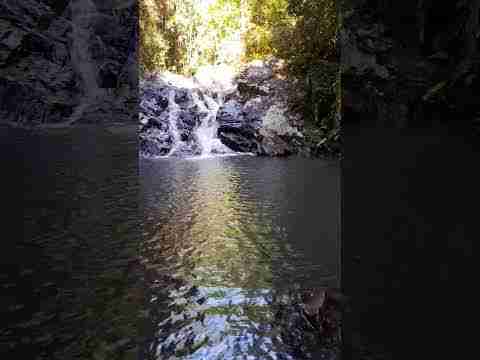[please login to make this ad block disappear]
Independent Review: Airboard Travel SUP
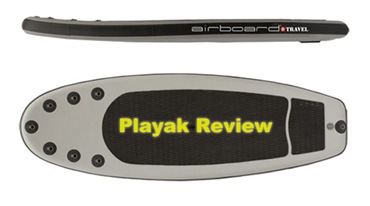 I tested the Airboard Travel SUP thoroughly for a couple of months and also gave it to a wide range of paddlers to try out: from tourists and children to experienced whitewater kayakers.
I tested the Airboard Travel SUP thoroughly for a couple of months and also gave it to a wide range of paddlers to try out: from tourists and children to experienced whitewater kayakers.
Specifications
According to the manufacturer ‘The Airboard Travel SUP is a sturdy all-round sports device which is ideal for rivers, lakes or the ocean. It is highly resistant, easy to transport and a reliable companion for memorable adventures’.
The stats on the board are:
- Length:280 cms / 9'2.2"
- Width: 86 cms / 33.9"
- Height: 15 cms / 5.9"
- Weight: 9.8 kg / 22 lbs
- Volume: 260 ltr / 68.7 gal
- Maximum Paddler Weight: 140 kg / 309 lbs
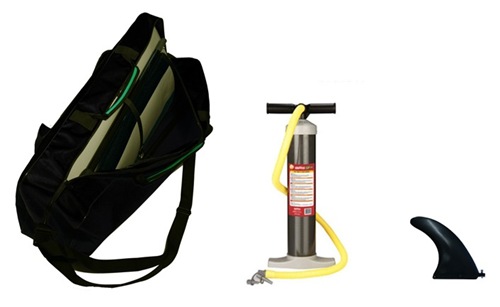
The complete Airboard Travel SUP Package
Looks
The board is colored a simple grey, with a black protective band around it, plus white text and a red logo on it. The simple color combination gives the board a bit of an underground touch – it doesn’t look like your typical surf board. It made some people think of a Swiss Army Board (there’s actually a small Swiss cross in the board’s logo), and others thought we had a 007 gadget when they saw us on the wave with it. The latter is probably also because SUP has grown very large in Switzerland (and is still growing), but mostly on lakes until now.
There is also a version called the Travel Rental, which comes with a bright orange deck. Instead of the US-box fin, which comes standard with the regular version, the Rental has three smaller glued on fins.
Fin(s)
The Travel SUP comers with a glued on US Box fin system and a large fin. Since the board rides so high on the water I would personally never use the board without a fin, not even on shallow whitewater, as it provides virtually no tracking at all without a fin. Luckily the board I used also had two glued on small fins, and I hope those will become standard on the next version (edited: Airboard confirmed this will be the case on the 2013 version).
Drop Stich Material
The Travel SUP uses a very thick double layer drop stitch vinyl of the dotted type, which means that the drop stitches are arranged in a dotted pattern (see photo above) as opposed to a line pattern, which would be less stiff. This thickness combined with the dots and the short overall length make the board extremely stiff for an inflatable.
Deck
The deck and hull are fairly smooth, smooth enough for the 3M helmet cam attachment to stick to it really well. I also installed an extra piece of deck pad on the nose of the board, which stays in place perfectly. Maybe I have to mention here that I never deflate the board, and I could image the extra deck pad coming of when rolling up the board regularly.
The deck pad is a diamond shape type, probably the best possible shape for maximum grip. On the tail is an extra kick pad, which works really well for me, as it’s exactly in the position I need to make a stern stall. For lighter or heavier people this kick pad will be in the wrong place for doing that, but even then, the pad is also a great extension of the main deck pad, and it gives you a good feel of where your foot is.
There’s an integrated carrying handle in the center of the board and 8 glued on D-rings, one on the tail for attaching a leash, and 7 on the front of the board. The front D-rings come without any roping, but they provide a handy basis for attaching almost anything you like, such as keys, waterproof expedition bags or water bottles.
Performance
Unlike lower volume boards, which ride through the water and thus behave more like a kayak, the Travel SUP floats high on top of the water. The only tracking is provided by the fins and the paddle. This means that it’s very easy to change direction: you can actually turn 360° with one paddle stroke. The downside is that the board feels very nervous when it’s not moving forward. Personally, coming from a kayaking background, I would prefer a craft that rides deeper through the water. When surfing river waves, getting to the wave through chaotic eddies is very tricky (I actually preferred to kneel on the board for this), but once you’re surfing, the board does a great job regarding speed and stability. Since the board is quite stiff, it’s very easy to shift weight and transfer the pressure from one end of the board to the other.
Airboard actually managed to get some real rocker into the board, mostly in the nose area, which is handy to prevent pearling during surfing. It also gives the board some extra primary stability, and this combined with the width of the board means that it is indeed very stable. Even beginners felt very confident standing up for the first time and hardly ever fell of the board on flatwater.
Surfing serious ocean waves is obviously not something we tested in landlocked Switzerland, but judging by the huge volume of the board it would be very difficult to paddle out through the surf. Then again, ocean surfing is not what the Travel SUP was made for.
The thickness of the Travel SUP means that it's not easy to stall the board on its tail. Airboard did put a great diamond shaped deck pad on the Travel SUP, and even a kick pad on the tail. That kick pad definitely helps, but the facts that the board is so thick, even in the nose and tail, means that it's not very stable on end. You have to stand in exactly the right location, and then it's a very fine line between staying flat and getting completely vertical.
This is only important when doing enders of course, which is not quite what the board was made for. Just standing on the tail to do a quick turn works great. Because the board floats so high and has no bottom rails, it spins on a dime.
Conclusion
The Airboard SUP Travel is a fun board, made to appeal to the masses, and it definitely has the potential to do so.
For real budget customers, there are cheaper inflatable SUPs on the market, but those are typically made of the thinner and thus not so stiff 4” or 5” drop stitch material. Considering the Travel is made of 6” drop stitch and comes with a US-Box fin, a diamond pattern deck pad and even a kick pad on the tail, the price tag of CHF 1280 (roughly USD 1320 or EUR 1065) means great value for money.
Currently Airboard’s main market is Switzerland, but I expect them to go more global next year. Masses of the world, prepare for fun :)
Manufacturer’s Website
For Playak,
Jeroen
Forums
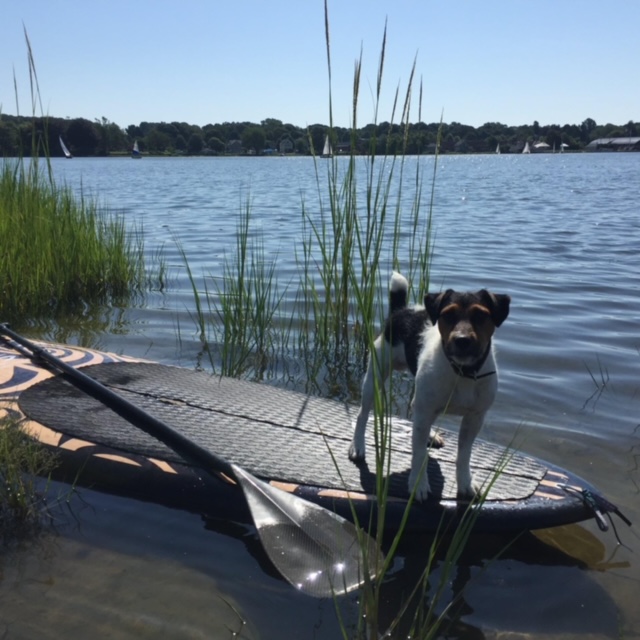
- Add rocker on a Sup » Hello there... (River SUP)
- 11' hard for river » Thanks, But is'nt for the same river... (River SUP)
- sup master instructor course from the Italian Federation for Amateur Paddling: October2016-June2017 » You should check out the ACA SUP program, as it sounds kinda similar...
- Waterblading - Send your Pics » bounce...
- Show us your SUP fish pics! » Extra Wide SUP for Fishing WideSUPfor2-2-3... (SUP Fishing)
- Michael Dolsey SUPs Has Just Opened a Southern California Distribution Center » NEWS FLASH Michael Dolsey Stand Up Paddleboards has just opened a southern California Distribution Center servicing the entire West Coast market...
Login to post here
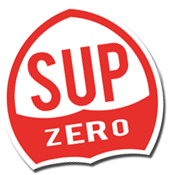

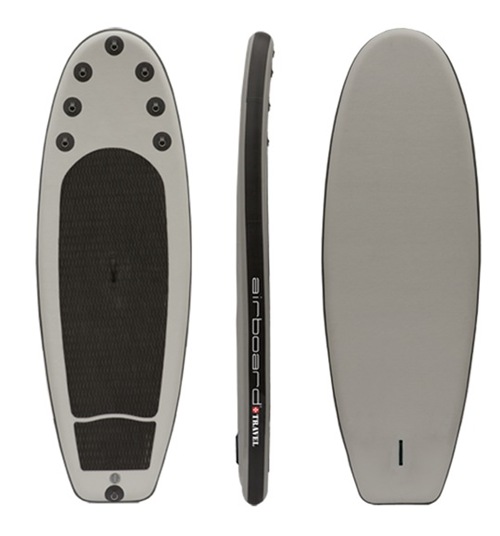
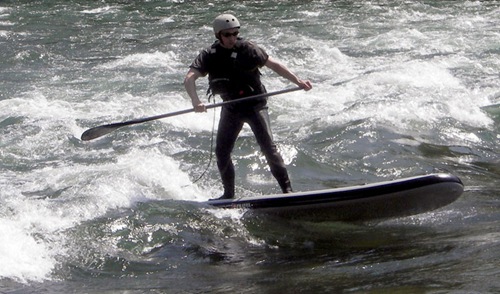
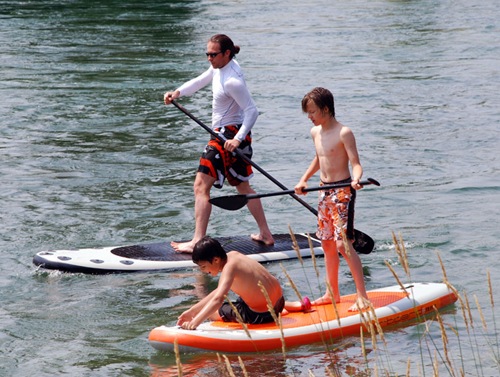
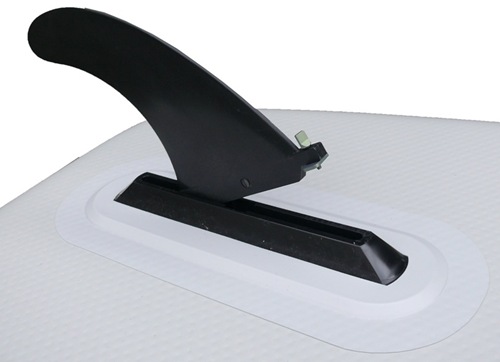
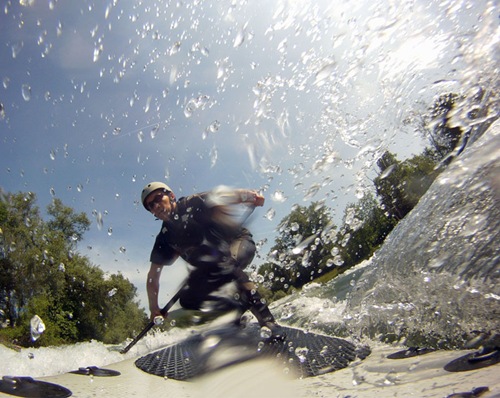



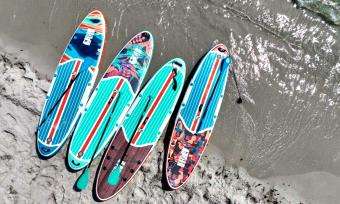









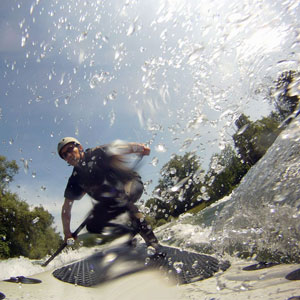 Get for free:
Get for free:


